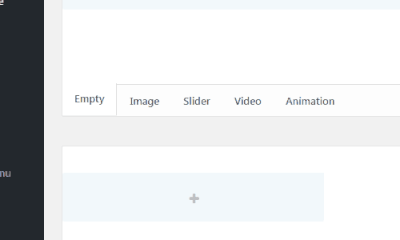
- #Activate animation composer how to
- #Activate animation composer install
- #Activate animation composer series
- #Activate animation composer download
#Activate animation composer series
There are a series of variables tied to the Temporal Controller. Click the Expression button to the right of Value. In the Layer Styling Panel switch to the Labels tab. You will be using this layer to simply label time. For symbology change the renderer from Single symbol to No symbols. Now you will symbolize and label this layer. This tells QGIS to redraw this layer each frame. Enable Temporal and set the Configuration to Redraw Layer Only. Open Layer Properties and select the Temporal tab. Put the layer into edit mode and create a point where you’d like the date to appear. You can use the View -> Decorations-> Copyright Label to put the url to the New York Times GitHub repository on the map.

Use the Size and Horizontal/Vertical settings to place it in a good spot. Configure it how you’d like and take a screenshot or reduce the size of the composition to fit to the legend and export it as an image.īack at the main QGIS window revisit View -> Decorations and choose Image. Start a new Print Composition and add just a Legend. To add the legend to the map canvas, you will set one up in the Print Composer. Choose a font and a background color and click OK. Click Enable Title Label and enter COVID-19 Cases per 1M by Date (NYT). These will allow you to add a title, legend and data source to the map canvas.įrom the View menu find Decorations and choose Title Label. Next you will work on some Decorations to add to the animation. The layer will likely take awhile to render so you may want to turn it off now that you have it set up. To do this, click on the colored bar next to Symbol.Ĭhange the Stroke color to white and the Stroke width to 0.06.Ĭlick the blue back arrow button to return to the main layer styling options. Next you will change all the outlines for all the classes to a thin white line. This is necessary if using the RdYlBu ramp so that the counties with the highest number of cases are red. Use the Color ramp selector to find a nice color ramp. You can begin by simply choosing the cases field as the Value.Ĭlick the Classify button and you will see the counties classified into the default 5 classes in your default color ramp. The Graduated renderer allows you to symbolize the counties based on a numeric field. Where it reads Single symbol, change it to Graduated. Make sure the correct counties layer is the target layer in the Layer Styling Panel. Now you will work on styling the filtered dataset. If you hover over that filter your expression will appear. When finished, a small filter icon will appear to the right of the layer in the Layers Panel. For each date it has both the cumulative number of confirmed COVID-19 cases and deaths. The NYT data is structured such that there is an entry for each county for each day of the pandemic. Make sure the states layer is the target layer in the panel. Press F7 to open the Layer Styling Panel. Next you will symbolize the States with a simple black outline and no fill.
#Activate animation composer install
If you have not installed these, you can do so from the Plugins menu option Manage and Install Plugins. Add the Data to QGIS & do some basic stylingĪdd all three datasets to QGIS 3.14, then use either the QuickMapServices or MapTiler plugin to add an OpenStreetMap basemap.


Counties with population shapefile and a State boundaries layer from the U.S.
#Activate animation composer download
To begin, download the current New York Times live COVID-19 data, a U.S.
#Activate animation composer how to
Here you will learn how to use it with the New York Times COVID-19 data to produce a county-based animation of the outbreak in the U.S. It contains most of the functionality found in the Time Manager plugin. The Temporal Controller is now a core part of QGIS and has several variables associated with it that allow you to create powerful visualizations and animations. It can be used to temporally enable vector, raster, mesh and WMS(T) data. One of the most powerful new features released with QGIS v3.14 is the Temporal Controller, which allows you to enable time in your maps.


 0 kommentar(er)
0 kommentar(er)
